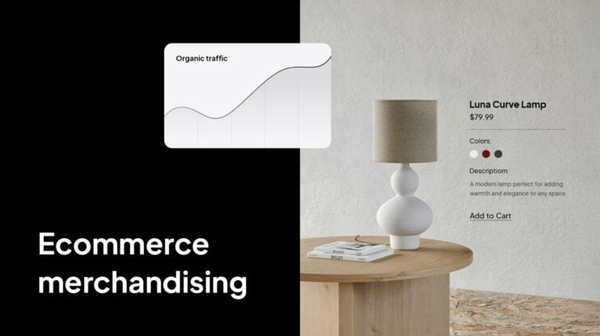Vegas Web Design Explained
What Is Vegas Web Design?
Vegas Web Design
In the digital age, having a strong online presence is essential for artists looking to showcase their work and connect with new audiences. A well-designed website can serve as a virtual gallery, allowing artists to display their artwork and tell their story to the world. However, building a website from scratch can be a daunting task, especially for those without technical expertise or a large budget. Fortunately, there are a number of free site builders available that make creating a professional-looking website easier than ever.

Vegas Web Design Challenges
Vegas Web Design
Choosing a Domain Name
One of the first steps in building a website is choosing a domain name. Your domain name is the web address that users will type into their browser to access your site. When selecting a domain name, it is essential to choose a name that is easy to remember, relevant to your brand or business, and available for registration. It is also important to consider the domain extension, such as .com, .org, or .net, as different extensions can convey different meanings to users.
Selecting a Hosting Provider
After selecting a domain name, the next step is to choose a hosting provider for your website. A hosting provider is a company that stores your website files on a server and makes them accessible to users on the internet. When selecting a hosting provider, it is essential to consider factors such as uptime, security, storage space, bandwidth, and customer support. It is also crucial to choose a hosting plan that aligns with the needs and goals of your website.
Designing the Layout
Once you have registered your domain name and selected a hosting provider, the next step is to design the layout of your website. The layout of your website includes elements such as the header, footer, navigation menu, content area, and sidebar. When designing the layout of your website, it is essential to consider factors such as usability, accessibility, and aesthetics. It is also important to ensure that your website is responsive, meaning it adapts to different screen sizes and devices, such as desktops, laptops, tablets, and smartphones.
Creating Content
After designing the layout of your website, the next step is to create content for your site. Content includes text, images, videos, and other multimedia elements that communicate your message to your target audience. When creating content for your website, it is essential to consider factors such as readability, relevance, and search engine optimization (SEO). SEO is the process of improving your website’s visibility in search engine results pages, which can help drive organic traffic to your site.
Adding Functionality
In addition to design and content, websites often include functionality that enhances the user experience and enables users to interact with the site. Examples of website functionality include contact forms, social media integration, e-commerce capabilities, and multimedia players. When adding functionality to your website, it is essential to consider factors such as usability, accessibility, and security. It is also important to test your website regularly to ensure that all functionality is working correctly.
Optimizing for Performance
Once you have designed your website, created content, and added functionality, the final step is to optimize your site for performance. Website performance refers to factors such as speed, loading times, and responsiveness, which can affect user experience and search engine rankings. To optimize your website for performance, you can use tools such as Google PageSpeed Insights and GTmetrix to identify and fix performance issues. It is also crucial to regularly update your website, monitor performance metrics, and make necessary adjustments to ensure that your site is running smoothly.
In today’s digital age, having a visually appealing and user-friendly website is crucial for the success of any business. A well-designed website can help attract new customers, build credibility, and increase conversion rates. However, designing a website is not as simple as it may seem. It requires a strategic and systematic approach to ensure that the final product meets the needs and expectations of both the business and its target audience. In this article, we will discuss the website design process in detail, outlining the key steps involved in creating a successful website.
Step 1: Define the Purpose and Goals
The first step in the website design process is to clearly define the purpose and goals of the website. This involves identifying the target audience, understanding their needs and preferences, and determining the desired outcomes for the website. For example, is the website meant to generate leads, drive sales, provide information, or showcase products and services? By having a clear understanding of the purpose and goals of the website, you can better tailor the design and content to meet these objectives.
Step 2: Conduct Research
Once the purpose and goals of the website have been defined, the next step is to conduct research. This involves analyzing the competition, researching industry trends, and gathering insights into the preferences and behaviors of the target audience. By conducting thorough research, you can gain a better understanding of what works and what doesn’t in your industry, helping you make informed design decisions.
Step 3: Create a Wireframe
After conducting research, the next step in the website design process is to create a wireframe. A wireframe is a visual representation of the layout and structure of the website, showing the placement of various elements such as navigation menus, headers, footers, and content sections. Creating a wireframe allows you to plan the overall design and functionality of the website before moving on to the visual design phase.
Step 4: Design the Visual Elements
Once the wireframe has been finalized, the next step is to design the visual elements of the website. This involves creating a visually appealing and consistent design that reflects the brand identity and resonates with the target audience. Elements such as color scheme, typography, imagery, and layout are carefully considered to create a cohesive and attractive design that conveys the desired message and engages users.
Step 5: Develop the Website
After the visual design has been approved, the next step is to develop the website. This involves coding the design into a functioning website using HTML, CSS, and other programming languages. During the development phase, the website is tested for functionality, responsiveness, and compatibility across different devices and browsers to ensure a seamless user experience.
Step 6: Test and Optimize
Once the website has been developed, it is essential to test and optimize its performance. This involves conducting usability tests to identify any usability issues, testing load times to ensure fast page speeds, and optimizing the website for search engines to improve visibility and accessibility. By testing and optimizing the website, you can ensure that it meets the needs and expectations of users, leading to better engagement and conversions.
Step 7: Launch and Monitor
The final step in the website design process is to launch the website and monitor its performance. This involves deploying the website to a live server, promoting it to the target audience, and tracking key metrics such as traffic, engagement, and conversions. By monitoring the performance of the website, you can identify areas for improvement and make informed decisions to optimize its effectiveness over time.

Getting Started with Vegas Web Design
Vegas Web Design
In conclusion, AI website builders are a valuable tool for individuals and businesses looking to create a professional website quickly and easily. Platforms such as Wix, Squarespace, WordPress, and Weebly offer AI technology to assist users in designing and customizing their websites, making it accessible to those with or without technical skills. With customizable templates, drag-and-drop interfaces, and e-commerce capabilities, AI website builders provide a comprehensive solution for anyone looking to establish an online presence. As seen on Reddit, these platforms have received positive feedback for their user-friendly interfaces, customizable designs, and AI integration, making them a top choice for website building in today’s digital age.


